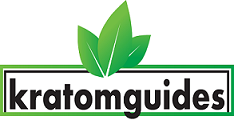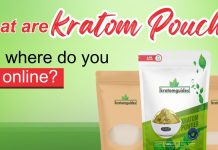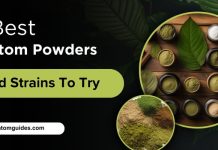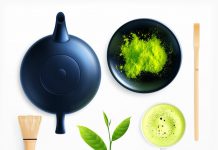Kratom has a number of alkaloids that impart various properties and effects. The alkaloids are the active ingredients in Kratom.
They act on the Opiate receptors present in the brain. These receptors are named as mu, delta and kappa receptors.
Different alkaloids have different affinities for the Opiate receptors. Some alkaloids have stronger affinity while others don’t.
On the basis of binding with receptors and evoking a response, the Kratom alkaloids are categorized into strong ones and weak ones.
This article will focus on strongest Kratom alkaloids that produce the strongest effects.
What is an alkaloid?
Alkaloids are naturally occurring molecules composed of nitrogen and carbon. They have a ring structure with at least one nitrogen atom.
They are basic in nature. They have very important physiological effects on a human being, therefore; they have been used in medicines.
The list of well-known alkaloids includes strychnine, morphine, quinine, nicotine, and ephedrine. They are usually derived from plant sources.
Certain plant families like poppy family, Solanaceae family, Amaryllidaceae family and Mitragyna Speciosa family are rich in alkaloids. A few animals and fungus also contain alkaloids.
What are the different types of alkaloids present in Kratom?
Kratom comprises of more than 40 alkaloids which act as the active ingredients.
The main alkaloids are Mitragynine and 7-hydroxymitragynine. These alkaloids act on the monoaminergic and Opiate receptors.
Mitragynine and 7-hydroxymitragynine act as an agonist at mu, delta and kappa receptors.
These alkaloids also act on adenosine-2a, postsynaptic α-2, dopamine-2s, and serotonin receptors. The structure of Mitragynine is similar to voacangine and yohimbine.
Hydroxymitragynine forms 2% of the 40 alkaloids present in Kratom. It is a selective full agonist at the Opiate receptors.
It has a stronger affinity for mu opioid receptors as compared to mitragynine.
Other active alkaloids of Kratom include ajmalicine, mitraphylline, rhynchophylline and mitragynine pseudoindoxyl.
Rhynchophylline is a non-competitive NMDA antagonist as well as an agonist at mu receptors.
Various other active alkaloids or ingredients of Kratom include raubasine, pausinystalia johimbe and corynanthidine, 7-acetoxymitragynine, Corynoxein, Corinoxin,
3-Dehydromitragynin, Epicatechin, 3-Isocorynantheidin, 3-Isopaynanthein, Isomitraphyllin, Isospeciofolin, Isospecionoxein, Mitraciliatin, Mitrafolin, Mitragynalin , Mitraphylin,
Mitraspecin, Mitraversin, Paynanthein, Speciociliatin, Speciofolin, Speciogynin, Specionoxein, Speciogynin, Speciofolin, Stipulatin.
Other than alkaloids, Kratom consists of terpenoid saponins, flavonoids, glycosides and various polyphenols.
Finding the strongest Kratom alkaloid
To find the strongest Kratom alkaloid it is necessary to correlate it to its properties.
Do we seek a string Kratom in regard to stimulation, euphoria, analgesia, relaxation or sedation? We’ll study the properties under the headings of the effects produced by Kratom.
Strongest analgesia producing Kratom alkaloid
The primary alkaloids involved in producing analgesic effect are mitragynine and 7-hydroxymitragynine. They are present in large amounts in the following strains of Kratom;
- Bali and Borneo
- Maeng Da
- Indo
- Malaysian
Strongest energy producing Kratom alkaloid
The most energetic Kratom strains are the ones that have the highest quantity of 7-hydroxymitragynine as well as mitragynine.
These alkaloids produce energy without giving a jittery feeling that is associated with the intake of Kratom.
The following Kratom strains are considered highly energetic due to their alkaloid content;
- Maeng Da
- Thai strains
- Malay strains
Strongest sedation producing Kratom alkaloid
The alkaloids that produce sedation are actually the ones that produce stimulation but there is a difference.
Sedation occurs when the high quantity of the alkaloids is taken. The well-known sedative strains of Kratom are;
Mood enhancing Kratom alkaloids
 The alkaloids that have the strongest affinity for mu and kappa Opiate receptors are known to cause euphoria and an overall boost in mood.
The alkaloids that have the strongest affinity for mu and kappa Opiate receptors are known to cause euphoria and an overall boost in mood.
These alkaloids are mitragynine and 7-hydroxymitragynine. The strains of Kratom that are known for boosting mood include;
- Maeng Da
- Bali
- Borneo
- Indo
- Malay
On the basis of the discussion above, one can rightly conclude that the strongest Kratom alkaloids are Mitragynine and 7-hydroxymitragynine.
The quantity of these alkaloids is maximum in Maeng Da, thus Maeng Da is the strongest Kratom strain.
Function of Mitragynine
Mitragynine is one of the major alkaloids present in Kratom and it can be considered the primary alkaloid of Kratom. It forms 0.1 to 0.3% of all the 40 alkaloids.
This indole alkaloid acts as a stimulant at the delta opioid receptors at low doses.
Apart from opiate receptors, Mitragynine also acts on 5-HT2a and postsynaptic α2-adrenergic receptors, as well as neuronal Ca2+ channels.
Higher doses of mitragynine result in painkilling action which is achieved by interaction with the mu opioid receptors.
Mitragynine does not induce any type of psychedelic effects. It is metabolized by the phase I and phases II microsomal system that is present in the liver.
It has certain drug interactions as it inhibits CYP3A4, CYP2D6, and CYP1A2 enzymes. Thus it should not be taken in conjunction with other drugs.
Functions of Hydroxymitragynine
It is the primary active ingredient of Kratom, and it is an agonist at Opiate receptors present in the brain and periphery.
It is known to be thirty times more potent than mitragynine. It acts on the Kappa, Delta, and Mu opioid receptors, but preferably it shows agonism at Mu receptors.
It causes analgesia and physical dependence. Tolerance develops quickly to hydroxymitragynine thus it should be taken carefully.
When compared with morphine, it is said to be 13 times stronger than morphine.
This figure could be an exaggeration but the area of focus here should be the fewer damaging effects produced by hydroxymitragynine.
It is a strong analgesic with very fewer risks of addiction.
At low doses, it produces a sense of lucid mental focus, analgesia, euphoria, enhanced cognition as well as sexual desire. While at high doses it can be described as relaxing and sedative.
Hydroxymitragynine is stronger than Mitragynine.
What are the other alkaloids present in Kratom?
- Ajmalicine: This has sympatholytic activity. It is a sedative and a muscle relaxant. It is also used as an anticoagulant.
- Ciliaphylline: It acts as a strong analgesic.
- Corynantheidine: It is an antagonist at the Opiate receptors.
- Corynoxeine: It acts as a Calcium Channel Blocker.
- Corynoxine: It acts in synergism with dopamine.
- Epicatechin: It has a number of actions. It is an anti-oxidant, anti-inflammatory, antiviral, anti-cancer, and anti-leukemic alkaloid.
- Isomitraphylline: It has an anti-leukemic action. It acts as an immunostimulant alkaloid.
- Mitraphylline: It is a strong muscle relaxant. It acts a vasodilator and a diuretic.
- Paynantheine: It is a muscle relaxant.
- Rhynchophylline: It is a calcium channel blocker as well as a vasodilator.
- Speciogynine: It is known to be a muscle relaxant.
- Speciophylline: It has an anti-leukemic action.
- Tetrahydroalstonine: It has a hypoglycemic and an anti-adrenergic activity.









This is a fantastic resource! I’ve been using kratom daily for several years (pain management). So, I could get off traditional opiate medications (particularly oxycodone). I’m absolutely IMPRESSED with the wealth of and quality of information presented here- you did a FANTASTIC job!